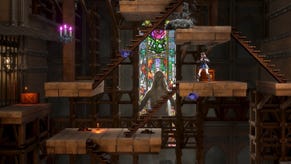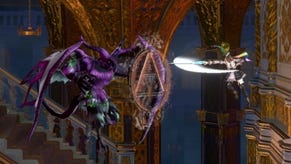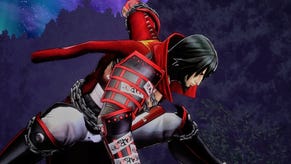Bloodstained is unmissable - but the Switch version needs a lot of work
One of the best games of the year on all other platforms.
Originally launching via Kickstarter, Bloodstained: Ritual of the Night is one of the most successful games in crowd-funded history. It is a game that may not have existed without the support of the community yet, like so many others, the road of completion was long and fraught with challenges - but the game has arrived and perhaps against the odds, it's good. Seriously good. From a personal perspective, the final result exceeds my very high expectations.
The initial pitch behind Bloodstained is compelling, promising a brand-new game in the style of Castlevania: Symphony of the Night direct from the original developers. It's a beautiful and highly playable take on the latter day Castlevania titles, with a massive world to explore, a wide selection of abilities, excellent play control and a brilliant presentation. It's the sort of game that fans have awaited for years. There's just so much that Bloodstained gets right. Each area is carefully crafted with each structure within the world angled to look just right from the perspective of the player, thanks to its 2.5D presentation. Dynamic lighting is used everywhere as are real-time shadows.I also love the use of clouds and mist throughout the game - especially the rapidly moving clouds visible outdoors that remind me of the entryway just before Dracula in the classic Symphony of the Night.
In fact, the game world is designed very much like SotN. Each distinct area is broken up into its own zone with connecting hallways used as transitions between them. The initial loading sequence is lengthy but once in the game, it all feels very seamless.While the visual style may not appeal to everyone, I think it's one of the best looking 2.5D games this generation - well, provided you're playing on the right platform. It's safe to say that not everything has gone according to plan. As Bloodstained arrived over the past couple weeks, technical problems and unexpected bugs started to emerge, mostly concentrated on the Nintendo Switch port. Beyond that, after playing each console version, I was surprised to find such a significant difference between all of them. Multi-platform comparisons have become somewhat dull as of late, but that is certainly not the case here - and of all the versions available, it is indeed the Switch rendition that quantifiably falls short.
The first thing to stress is that the development team is currently focusing heavily on refining the Switch version of the game, so while I'm reporting on the issues in the current build, it's certain to improve - the question is, to what degree - and is the game as it stands really as bad as people have suggested? Let's start with the basics across all platforms in terms of resolution metrics. At the top of the pile sits the Xbox One X version which impressively, seems to deliver a full native 4K experience. The possibility of dynamic resolution cannot be ruled out but after counting shots across many different environments, I feel that the resolution is either fixed at 4K or spends the vast majority of its time there. The point is - image quality is a strong point on Xbox One X.
PlayStation 4 Pro, however, differs by a greater margin than usual - this version is limited to just 1080p instead. That is a mere quarter of Xbox One X's pixel-count, offset just a tad by what may be Unreal Engine 4's temporal supersampling tech in action. It may seem like a crushing advantage for the Microsoft console, but the story is not so cut and dried - as we'll see soon enough. The base PS4 delivers native 1080p while Xbox One S delivers 900p as you might expect. Switch, however, is higher than I might have expected in all honesty, as Unreal Engine Switch titles typically utilise very low resolutions. When playing docked, Switch appears to hit 720p - at least most of the time. This is a very very difficult game to pixel count due to its anti-aliasing and lack of free camera but it does seems to resolve at this number. Meanwhile, portable mode sees a drop to 576p.
Either way, I feel that one of the issues with the Switch version is that the anti-aliasing simply doesn't work well with such low resolutions and the result is very blurry-looking image quality, to the point where I think we'd likely be better off with a basic post-process AA instead. It might exhibit additional shimmering as a result but it would appear much sharper overall. Honestly, though, resolution isn't really the issue on Switch in terms of visual quality. The most noticeable difference lies in core art asset quality - texture resolution takes a huge hit on the Switch to the point where most surfaces appear as if they haven't fully loaded. In portable mode, the loss in detail isn't felt nearly as strongly as in docked due to the small screen, but it's not attractive in either mode.
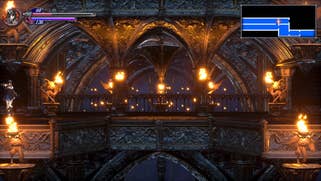


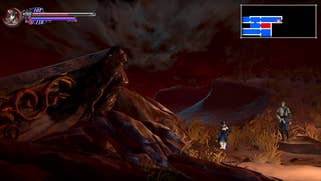
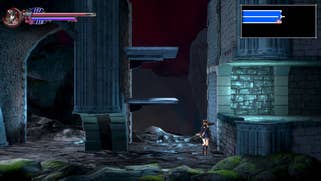
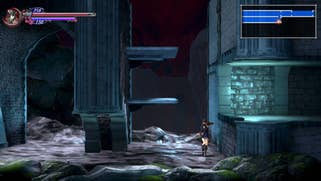
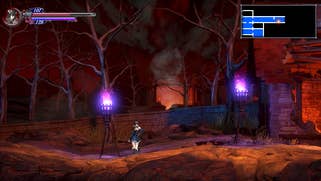
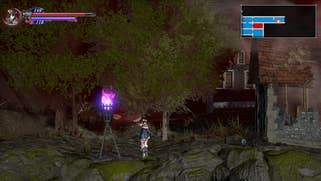
Beyond that, certain effects have been pared back significantly, particularly in terms of water and in how light sources can cast shadows (on Switch, they don't). Another interesting trade-off is found in the dialogue sequences. On other platforms, the game scene is rendered in 3D behind the models during these sequences. Switch presents an intriguing compromise. Just before a conversation, a snapshot is taken of the game screen and used as the background for the dialogue. It's a cunning idea but it doesn't quite work: the effect occasionally breaks and you end up with a glitchy background instead, something that happened several times during my playthrough.
That said, despite this, I do feel the cuts make sense and ultimately, they help to deliver a game that looks similar enough to the other versions. Unfortunately, there are several problematic issues. For one thing, there are crashes - every version of the game seems to exhibit these issues and, in my case, they occur only when pulling a book from the bookshelves. It's a somewhat weird but definitely annoying issue to be sure. Then there's the loading. Throughout the game, loading times between areas tend to be somewhat lengthier on Switch but there are a couple of areas where it becomes downright horrible: some areas require jumping into another room, necessitating a lengthy load. The problem is that if you don't jump high enough, you fall back into the area you jumped from. Since each instance of loading takes such a long time, however, this becomes rather frustrating.
One other serious problem with the Switch version - and perhaps the most troublesome of all - is the input latency. From what I've determined, input lag is somewhere above 140ms - almost double that of the other versions. This means the entire game feels heavy and unresponsive in comparison. Apparently, the development team has a lot of fixes in the works but of these, I feel input latency is most critical followed by the loading issues. It would be nice to see improved textures and effects but those are the changes I expected so I don't feel it's a genuine problem.
PlayStation 4 and Xbox One are generally sound. The primary difference is indeed the resolution, but each version has its own niggles.For example, the Xbox game triggers HDR on compatible displays, but it's not properly supported - it's an SDR image mapped into an HDR container and as such offers no advantage over a normal screen. PS4, meanwhile, doesn't offer HDR support at all. But it's performance that reallyseparates the pack. This is a game that runs very differently on each machine and all of them have their own issues to a degree.
The best performer, by far, is the PS4 Pro. Locked at native 1080p, this version holds 60 frames per second nearly all of the time. It's a very stable game but even still, it's not quite perfect. There are occasional hitches, for instance, such as when you gain a new shard. Still, by and large, the game runs very well and, if you're looking for the most fluid console release, Pro is the one you want to get.
And this is what makes the Xbox One X build so curious. It's pushing four times the number of pixels and does look much better, but as a consequence, the frame-rate is not as stable as the Pro. Many scenes exhibit minor dips below 60fps which can take some of the sheen away from the experience. However, after spending a lot of time with Bloodstained, performance is still high enough as to be not overly distracting. This is really a situation of image quality versus stability: if you're okay with inconsistencies during gameplay, go for the Xbox One X version, but if you prefer something approaching a locked frame-rate, PS4 Pro is the one to play.
After that, we have the base PS4 which looks very, very close to the Pro version but certainly doesn't run that way. The base experience is significantly worse with slowdown rearing its head on a regular basis. Early on, the results aren't too bad but as you progress, the frame-rate starts to plummet. Many scenes throughout the game struggle to even hold 50 frames per second let alone 60fps, while there is evidence that some late game areas can really can tank frame-rate hard. Next up, there's the Xbox One S, which sees resolution drop to 900p, but offers performance broadly equivalent to the standard vanilla PS4 - and this leaves the Switch version as the least impressive of the bunch. I actually went in expecting the worst and the results aren't pretty - but they're also better than I expected. Basically, one of the major sacrifices made to get up and running on Switch was the reduction of the frame-rate to 30 frames per second as opposed to 60fps. By and large, Switch has no issues hitting this level of performance.
After playing through roughly 30 per cent of the game on Switch, I've found that the frame-rate is really quite stable overall. There are some occasional hitches but it's smooth enough - it doesn't feel right. I think the issue here is that the lower frame-rate combined with high input latency results in a game that just feels a lot worse to play overall. It's the same in portable mode too - it holds 30fps just like docked, but still feels very laggy to play.
Overall though, Bloodstained is a brilliant game with a few rough edges - especially so on Switch clearly. But despite the technical problems, I think it's absolutely worth playing and a worthy follow-up to Symphony of the Night. It has a sense of scale that is more in line with the PS1 classic as opposed to its portable follow-ups. I also appreciate the core design of the progression - this is a game that doesn't hold your hand. Progression is often unclear and players are pushed to explore and play around with the game to proceed. It feels like a design straight out of 1997… and I mean that in the best possible way. It's clear that the developers understand what makes those games so special and they don't go out of their way to guide you by hand through the experience. It's very rewarding to play. Put simply, the master has definitely returned.





